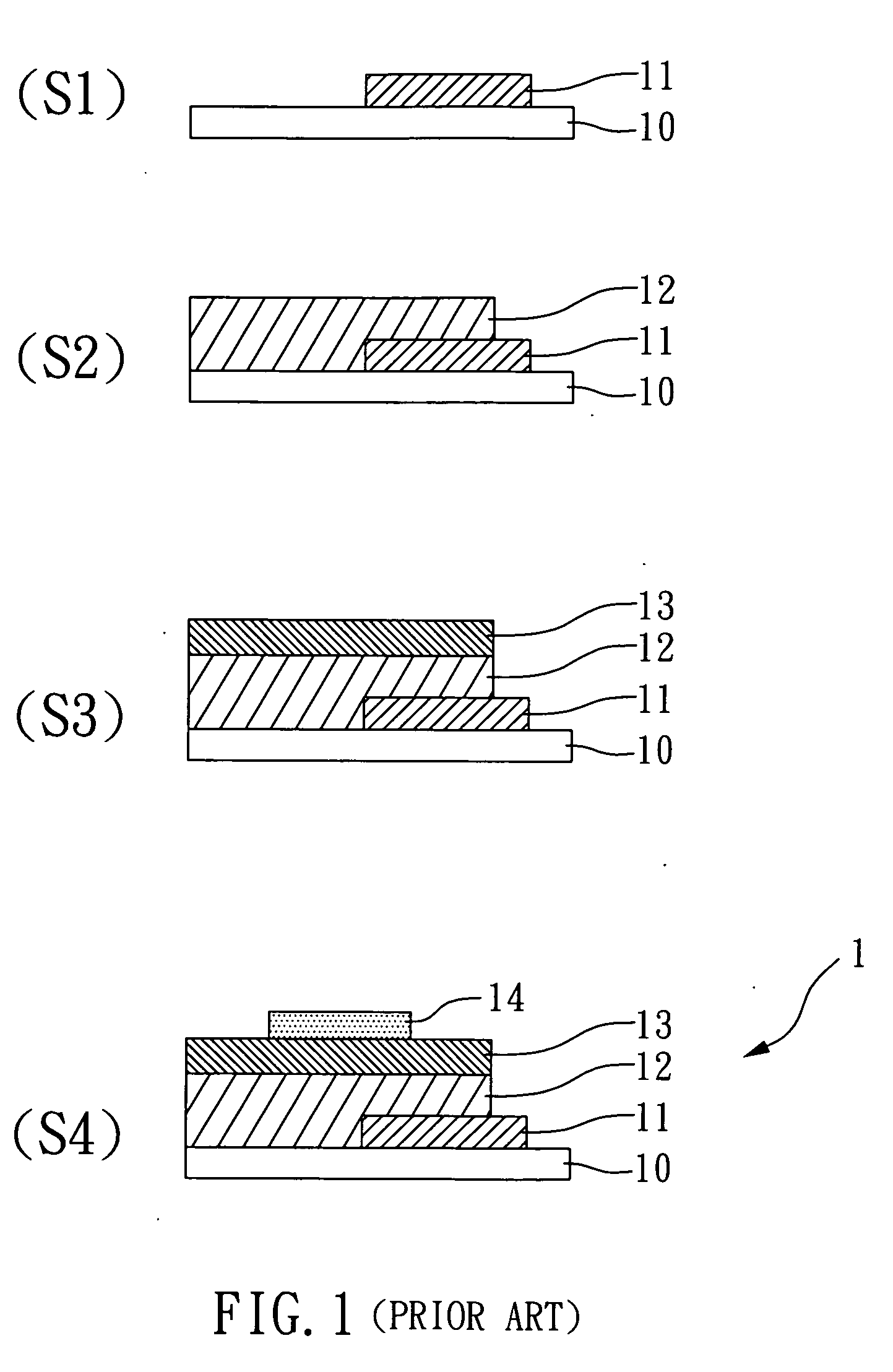Three-dimensional indium-tin-oxide electrode, method of fabricating the same, device of fabricating the same, and method of fabricating solar cell comprising the same
a technology of indium-tin oxide and electrode, which is applied in the direction of sustainable manufacturing/processing, final product manufacturing, conductors, etc., can solve the problems of significant difficulty in improving the efficiency of the solar cell, performance achieved less success than expected, and the contact area is increased. , the effect of improving the flow efficiency and uniformity of electric curren
- Summary
- Abstract
- Description
- Claims
- Application Information
AI Technical Summary
Benefits of technology
Problems solved by technology
Method used
Image
Examples
example 1
[0037]Referring to FIG. 2, there is shown an evaporator 2 of the present invention, which comprises a reacting chamber 20, an evaporating source 21 placed in the bottom 201 of the reacting chamber 20, a substrate holder 22 facing the evaporating source 21 and connecting to the ceiling 202 of the reacting chamber, a nitrogen supplying valve 23, an oxygen supplying valve 24, an exhaust tube 25, a heater 26, and a thermometer 27. With reference to FIG. 3, when a substrate 28 is held by the substrate holder 22, the angle θ between the normal direction of the substrate 28 and the bottom 201 of the chamber 20 is tunable in a range from 0 to 90 degrees, preferably from 5 to 85 degrees, more preferably from 60 to 75 degrees, in which the angle θ used in the present invention is 60 to 75 degrees.
example 2
[0038]Referring to FIG. 4, there is shown another evaporator 2 of the present invention, which not only has the same features shown in Example 1, and moreover, the evaporator 2 of the present example further comprises a turntable 29 arranged between the substrate holder 22 and the ceiling 202 of the reacting chamber 20. Therefore, the relative position of the substrate holder 22 arranged at the turntable 29 via the evaporating source 21 can be adjusted by turning the turntable 29 to a desired position.
example 3
Preparation of the Three-Dimensional ITO Electrode
[0039]In the present example, a three-dimensional ITO electrode is made by using the evaporator 2 of the example 1. First, an evaporator 2 as shown in FIG. 2 of the example 1 is prepared (A). With reference to FIGS. 2 and 3, a substrate 28 having a conductive layer (not shown) thereon is held by the substrate holder 22 (B). Then, the angle (θ) between the normal direction of the substrate 28 and the bottom 201 of the chamber 20 is tuned to 67 degrees. The angle (θ) is preferably adjusted according to the surface structure of the conductive layer, which is preferably in a range from 0 to 90 degrees, more preferably from 5 to 85 degrees, and most preferably from 60 to 75 degrees. Subsequently, nitrogen gas and oxygen gas are supplied into the chamber 20 by the nitrogen supplying valve 23 and oxygen supplying valve 24 respectively, the flow ratio of oxygen gas versus inert gas is controlled at 0.5 or less, preferably 0.1 or less. The to...
PUM
| Property | Measurement | Unit |
|---|---|---|
| Temperature | aaaaa | aaaaa |
| Temperature | aaaaa | aaaaa |
| Temperature | aaaaa | aaaaa |
Abstract
Description
Claims
Application Information
 Login to View More
Login to View More - R&D
- Intellectual Property
- Life Sciences
- Materials
- Tech Scout
- Unparalleled Data Quality
- Higher Quality Content
- 60% Fewer Hallucinations
Browse by: Latest US Patents, China's latest patents, Technical Efficacy Thesaurus, Application Domain, Technology Topic, Popular Technical Reports.
© 2025 PatSnap. All rights reserved.Legal|Privacy policy|Modern Slavery Act Transparency Statement|Sitemap|About US| Contact US: help@patsnap.com



